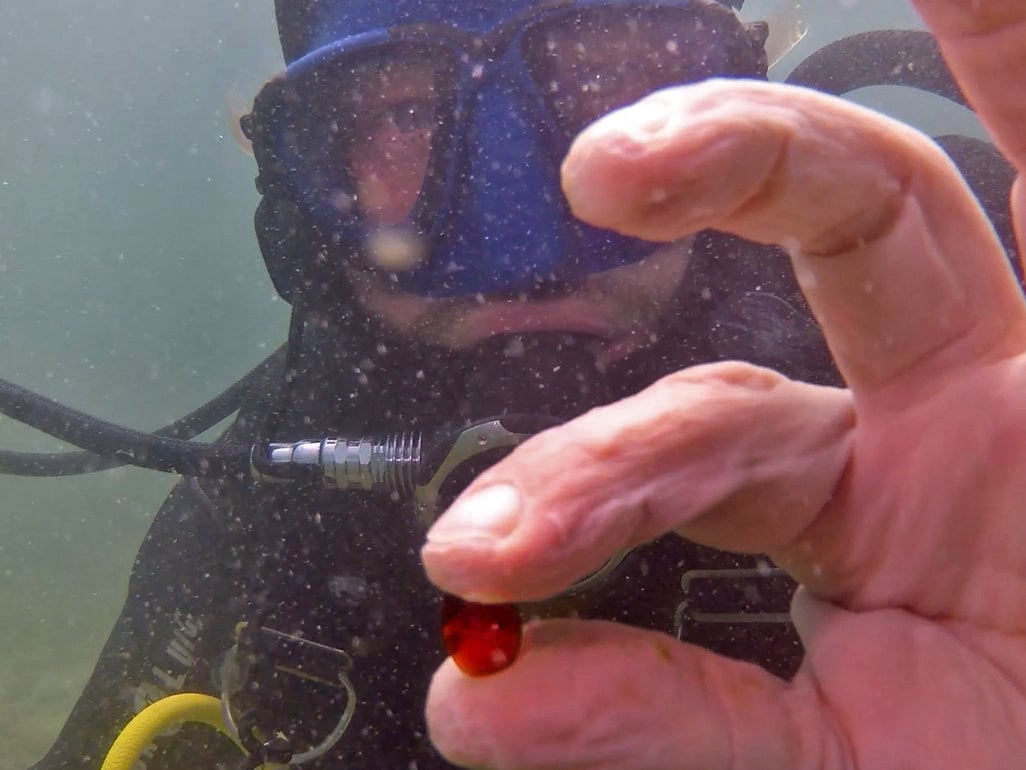
While conducting a routine survey of the ocean floor near Caesarea, a town on Israel’s Mediterranean coast, a squad of divers from the Israeli Antiquities Authority’s Marine Archaeology Unit recently made a remarkable discovery. Just 13 feet under the surface, they found the remains of not one but two ships—which sank during the Roman and Mamluk periods, 1,700 and 600 years ago respectively—containing a rich yield of booty.
The shipwrecks include hundreds of silver and bronze Roman coins from the mid-third century as well as a great quantity of Mamluk-period silver coins called dirhams, dating to the 14th century. Pottery vessels, bronze bells to ward off evil spirits, jewelry, and various figurines were also uncovered.
In a video announcing the find (which has a highly dramatic soundtrack and is really worth watching), Robert Kool, head of the department of coins at the Israel Antiquities Authority, explains that underwater finds are especially valuable. There is no oxygen to erode the coins, Kool explains, so they are better preserved. There are precious few coins from this period, he says, making this a highly significant find that fills out information from surviving documents.
The jewelry, probably personal possessions of the sailors, include a red gemstone carved with the image of a lyre, referring to a Biblical passage in which King David played the instrument for Saul. There is also an octagonal gold ring set with a green gemstone carved with the image of a shepherd carrying a ram or sheep on his shoulders, symbolizing Jesus, the Good Shepherd. Caesarea was an early locus of Christianity, so it would seem that the sailor who wore it was an early practitioner of the faith.
“The ships were probably anchored nearby and were wrecked by a storm,” say Jacob Sharvit and Dror Planer of the Marine Archaeology Unit in a press release. “They may have been anchored offshore after getting into difficulty, or fearing stormy weather, because sailors know well that mooring in shallow, open water outside of a port is dangerous and prone to disaster.”
Authorities have found numerous shipwrecks from various historical periods at the site. The two recently discovered also yielded many metal fragments of a wooden ship, such as lead devices used to measure the depth of the seafloor, dozens of large bronze nails, and an iron anchor that was broken into pieces; experts think it likely was snapped during the storm that felled one of the vessels.
More photos of the haul are below.
A hoard of coins from the Mamluk period including cut coins. Photo: Dafna Gazit, Israel Antiquities Authority.
Gold ring with a green gemstone engraved with the figure of the Good Shepherd. Photo: Dafna Gazit, Israel Antiquities Authority.
A hoard of coins from the Roman period. Photo: Dafna Gazit, Israel Antiquities Authority.
Bronze figurines from the ships’ cargo. Photo: Dafna Gazit, Israel Antiquities Authority.